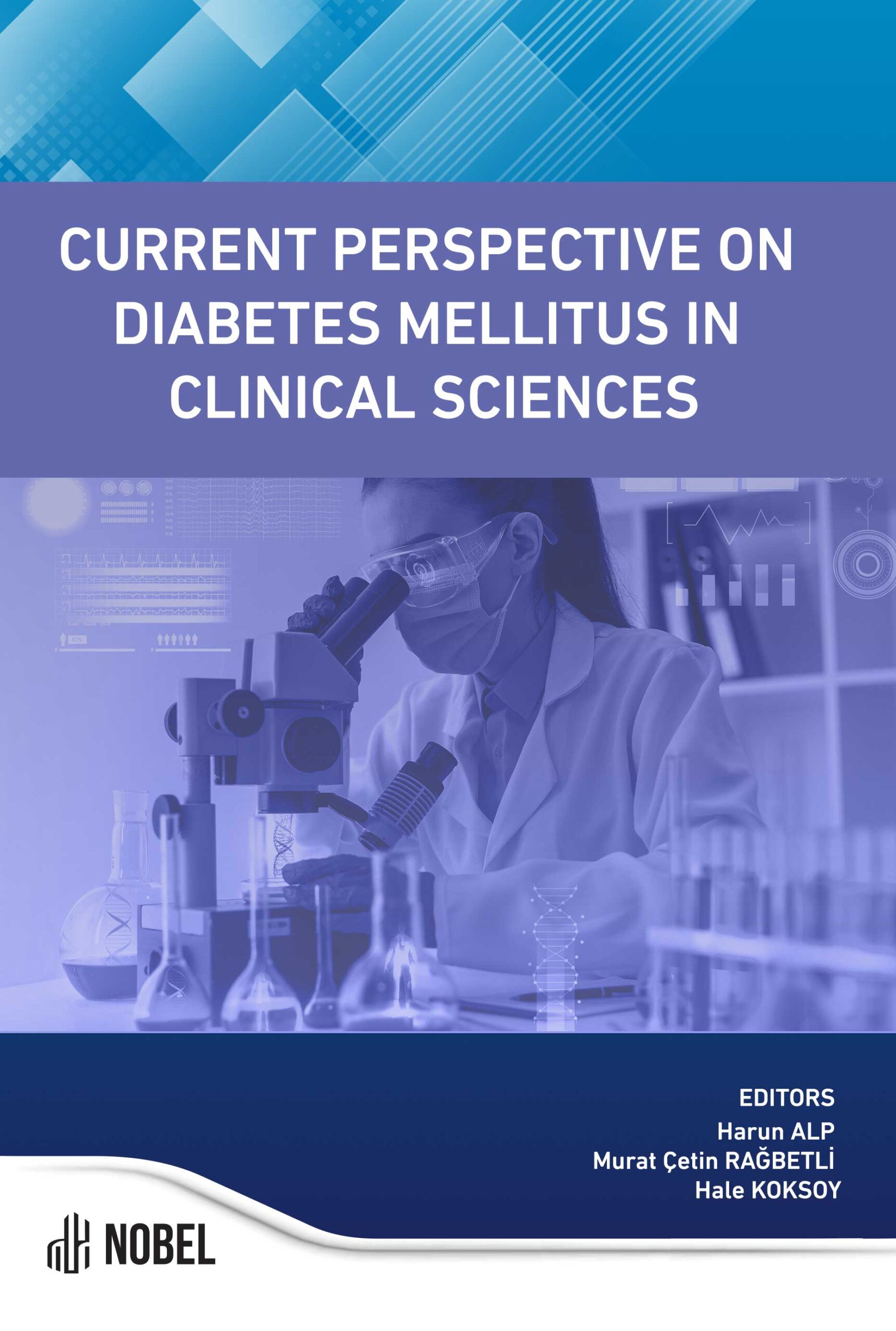The Hyperglycemic Hyperosmolar State
Nuray Kilic (Author)
Release Date: 2023-09-14
The hyperglycemic hyperosmolar state (HHS) is a life-threatening medical emergency characterized by severe hyperglycemia, hyperosmolality, and dehydration in individuals with type 2 diabetes mellitus. Unlike diabetic ketoacidosis (DKA), which is more common in type 1 diabetes, HHS typically occurs in older adults with type 2 diabetes who have significant insulin resistance, though it can also [...]
Media Type
PDF
Buy from
Price may vary by retailers
| Work Type | Book Chapter |
|---|---|
| Published in | Current Perspective on Diabetes Mellitus in Clinical Sciences |
| First Page | 195 |
| Last Page | 200 |
| DOI | https://doi.org/10.69860/nobel.9786053359111.17 |
| ISBN | 978-605-335-911-1 (PDF) |
| Language | ENG |
| Page Count | 6 |
| Copyright Holder | Nobel Tıp Kitabevleri |
| License | https://nobelpub.com/publish-with-us/copyright-and-licensing |
Nuray Kilic (Author)
Asst. Prof. Dr., Karamanoglu Mehmetbey University
https://orcid.org/0000-0003-1371-3600
DF Diabetes Atlas 9th edition 2019 April 2021.
Marx JA, Hockberger R, Walls R. Rosen’s Emergency Medicine: Concepts and Clinical Practice (Volume 2): Elsevier; 2010.
Kitabchi AE, Umpierrez GE, Murphy MB, Barrett EJ, Kreisberg RA, Malone JI, et al. Management of hyperglycemic crises in patients with diabetes. Diabetes care. 2001;24(1):131-53.
Tintinalli JE. Tıntınallı Acil Tıp kapsamlı bir çalışma kılavuzu. 2021;9.baskı.
Alpar S. Aci l serviste hiperglisemi saptanan hastalarda ölçülen ultrasonografi k optik sinir kılıf çapı ile kan şekeri regülasyonu sonrası ölçümler arasındaki farkın araştırılması. 2019.
Association AD. 2. Classifi cation and diagnosis of diabetes: standards of medical care in diabetes—2021. Diabetes care. 2021;44(Supplement_1):S15-S33.
Satman İ, İmamoğlu Ş, Yılmaz C, Ak alın S, Salman S, Dinççağ N. TEMD Diabetes Mellitus Çalışma ve Eğitim Grubu. Diabetes Mellitus ve Komplikasyonlarının Tanı, Tedavi ve İzlem Kılavuzu-2019 Türkiye Endokrinoloji ve Metabolizma Derneği (TEMD) Yayınları, Bayt Matbaacılık, Ankara. 2019.
Levitsky LL, Misra M. Epidemiology, presentation, and diagn osis of type 1 diabetes mellitus in children and adolescents. 2018.
Cander PDB. Acil Tıp temel başvuru kitabi. 2020;2.
Prof. Dr . Kerim GÜLER PDSÇ. ACİL Dahiliye. 2021;9:791.
Hirsc h IB, Emmett M. Diabetic ketoacidosis and hyperosmolar hype rglycemic state in adults: Clinical features, evaluation, and diagnosis. UpToDate. 2018;2(5):1-28.
Zadkar SR. Hyperglycemic Hyperosmolar State. Journal of Research & Innovation in Anesthesia. 2019;4(2):32-5.
Kitabchi AE, Umpierrez GE, Miles JM, Fisher JN. Hyperglycemic cr ises in adult patients with diabetes. Diabetes care. 2009;32(7):1335-43.
TDMÇ Grubu ve DIABETES MELLITUS VE KOMPLİKASYONLARININTANI, TEDA Vİ VE İZLEM KILAVUZU. 2020.
Bogun MM, Bundy BN, Goland RS, Greenbaum CJ. C-peptide levels in subje cts followed longitudinally before and after type 1 diabetes diagnosis in TrialNet. Diabetes Care. 2020;43(8):1836-42.
OLT S. SAĞLIK & BİLİM 2022 İÇ HASTALIKLARI ACİLLERİ. 2022;1:232.
Umpie rrez GE. Hyperglycemic crises: diabetic ketoacidosis and hyperglycemic hy perosmolar state. Diabetes Complications, Comorbidities and Related Disorders. 2020:595-614.
Lavin PJ. Hyperglycemic hemianopia: a reversible complication of non-ketotic h yperglycemia. Neurology. 2005;65(4):616-9.
Malone ML, Gennis V, Goodwin JS. Characteristics of diabetic ketoacidosis in o lder versus younger adults. Journal of the American Geriatrics Society. 1992;40(11):1100-4.
Wachtel TJ, Tetu-Mouradjian LM, Goldman DL, Ellis SE, O’Sullivan PS. Hyperosmo larity and acidosis in diabetes mellitus: a three-year experience in Rhode Island. Journal of general internal medicine. 1991;6:495-502.
Kitabchi A. Diabetic ketoacidosis and hyperglycemic, hyperosmolar nonketotic st ate. Joslin’s diabetes mellitus. 1994.
Page MM, Alberti K, Greenwood R, Gumaa K, Hockaday T, Lowy C, et al. Treatment of diabetic coma with continuous low-dose infusion of insulin. Br Med J. 1974;2(5921):687-90.
Padilla AJ, Loeb JN. “Low-dose” versus “high-dose” insulin regimens in the mana gement of uncontrolled diabetes: A survey. The American Journal of Medicine. 1977;63(6):843-8.
| onix_3.0::thoth | Thoth ONIX 3.0 |
|---|---|
| onix_3.0::project_muse | Project MUSE ONIX 3.0 |
| onix_3.0::oapen | OAPEN ONIX 3.0 |
| onix_3.0::jstor | JSTOR ONIX 3.0 |
| onix_3.0::google_books | Google Books ONIX 3.0 |
| onix_3.0::overdrive | OverDrive ONIX 3.0 |
| onix_2.1::ebsco_host | EBSCO Host ONIX 2.1 |
| csv::thoth | Thoth CSV |
| json::thoth | Thoth JSON |
| kbart::oclc | OCLC KBART |
| bibtex::thoth | Thoth BibTeX |
| doideposit::crossref | CrossRef DOI deposit |
| onix_2.1::proquest_ebrary | ProQuest Ebrary ONIX 2.1 |
| marc21record::thoth | Thoth MARC 21 Record |
| marc21markup::thoth | Thoth MARC 21 Markup |
| marc21xml::thoth | Thoth MARC 21 XML |

